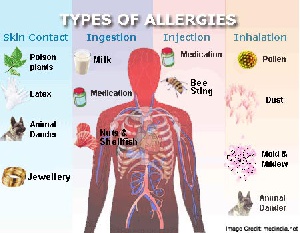For those of us who are ardent followers of nutritional science, the blood type diet is a persistent source of worry. I am always inundated with questions from average to serious minded people about what I think of the “Eat Right for Your Type” diet, also known as the blood type diet, which claims that specific optimal diets exist for each blood type. Since then I have been asking myself how come a theoretical diet full of scientific errors gain widespread public attention.
In Ghana, for example, herbal practitioners like T/dr Amankwah of Habibi herbal clinic are lifting the veil on the blood type diet. This man is on TV every week promoting this theory which has no scientific backing it. The blood type diet is one of the examples of how you simply cannot believe everything you read, no matter how persuasive it may seem. There are many people who swear by this diet and claim that it has saved their lives. Although the blood type diet works for some people, this has nothing to do with blood type. D’Adamo is certainly a prolific writer and outstanding scientist as he cleverly offers a very complex, scientific, and well-documented support for his concept.
In this piece, I’ll take a critical look at whether there’s anything to this idea, and whether you should change the way you’re eating based on whether you’re Type O, A, B or AB.
Blood type explained
For the average Ghanaian, blood is blood because it looks the same to the naked eye. Blood contains the same basic components which include red cells, white cells, platelets, and plasma. There are many different ways to classify blood types, but the most common is the ABO system, which is determined by the type of antigens existing on the surface of the red blood cells. Antigens are proteins and sugars that our bodies use to identify the blood cells as belonging in our own system. The most familiar grouping, known as ABO blood types, refers to whether a person's cells carry the proteins known as A or B, or both of them, or neither of the two - which is designated blood type O. The other factor that types blood is the Rh factor which categorize blood type as (positive) + or - (negative). Rhesus (Rh) factor was discovered by an American researcher known Philip Levine and refers to another type of antigen, or protein, on the surface of red blood cells. The name Rhesus comes from Rhesus monkeys, in which the protein was discovered. So it is very important to know what blood type you are if you ever need a blood transfusion.
Blood type idea came about through Ancient doctors’ curiosity trying to find answers and meaning to some medical challenges they encountered. Some thought that blood transfusion could be a treatment for all manner of ailments even though the result was catastrophic. Patients had to lose their lives by wrong procedures because blood transfusing was done between spices at the time. According to Blundell, a British physician who later recognized this error concluded that "the different kinds of blood differ very importantly from each other". He himself had to battle with most of his female patient who died from this fundamental error of using animal’s blood on humans. He later recognized that human patients should only get human blood but the difficult aspect was that no one had ever tried to perform such a transfusion. Even though Blundell was right in believing that humans should only get human blood, however, he was clueless about the fact that humans should only get blood from certain other humans.
An Austrian physician Karl Landsteiner first discovered blood types in 1900. One issue which informed Landsteiner to embark on a mission that would later lead to the discovery of blood types was blood clumping that was overlooked by early scientists. Landsteiner collected blood from members of his lab, including himself. He separated each sample into red blood cells and plasma, and then he combined plasma from one person with cells from another. After numerous try and error, he found out that the clumping occurred only if he mixed certain people's blood together but followed certain rules when he mixed the blood from different people together. He later categorized his findings and combinations into three separate groups and arbitrary named them as A, B and C. (Later on C was renamed O, and a few years later other researchers discovered the AB group. Rh blood factor (+ or -) which was later discovered by one American researcher was placed at the end Landsteiner’s letters which indicates whether a person has the factor or not. This became another way of categorizing blood. Landsteiner's discovery opened the way to safe and large-scale blood transfusions.
Blood type diet theory
The "blood type diet" theory received much attention from the public since the release of "Eat Right for Your Type" by Dr D'Adamo, a naturopathic physician who developed the blood type diet in the United States in the mid-90's. He argued that proteins on red blood cells respond to foods in different ways. The good doctor believes that certain foods are good for your blood type, and that others are dangerous. And so he wrote a book about the diet that sold millions of copies same way the Habibi herbal clinic doctor and others are doing to promote themselves and their outfits.
The theory claims that our blood type reveals the dietary habits of our ancestors. . According to the blood type diet folks, originally, all human beings were blood type O, which is also the most common blood type today. And so Peter and his cohorts believe that people with the O blood type had ancestors who were skillful hunters and whose diets were high in meat and animal proteins. For modern people with the O blood type he advocates a high meat, low carbohydrate "hunter" diet, with virtually no wheat, few grains or legumes and limited dairy products. He also claims people with type A descended from agrarian cultures and so they should follow a vegetarian diet. He recommends that blood type A’s avoid wheat and dairy and replace meats with some "highly beneficial" fish and seafood.
People with blood type B are advised to eat a more varied diet of most meats, grains and vegetables, eggs and can also tolerate dairy products but should avoid everything from corn, wheat and lentils to tomatoes and chicken. Peter also indicates that blood type AB, the rarest blood type is a combination of blood type A and B and so he advocates a mixture of A and B recommended diets. He advocates a mostly vegetarian diet but should include some meats and fish in the diet from time to time.
Before I move to the science or lack thereof of the blood type diet, it should be noted that Dr. D’Adamo generally advised against wheat and other highly processed foods such as chips, pastries, candy, ice cream, snack food, fast food, etc. for all blood.
Putting blood type diets to the test……..My take
I will shortly demonstrate how Dr. D’Adamo’s and his cohorts recommended diets have little or nothing to do with ABO blood groups. D’Adamo’s claim is embedded primarily in three observations.
First, that people with different blood types appear to have differing susceptibility to certain diseases; second, exposure to foods containing lectins incompatible with your blood type will cause agglutination of your blood; third, that different blood types developed at different points during our evolution and so each of the four types is adapted to the diet consumed around the time when their blood type first evolved.
Evolution claim
First and foremost, Peter and his cohorts got the whole anthropology mixed up. His claims about the origins of human blood types and the dietary patterns which elicited the four common blood types are completely incorrect and have no have no leg to stand on. As someone basing his whole approach to diet on blood types, D’Adamo appears ignorant of basic facts about the evolution of the ABO types.
His suggestion that O is the oldest human blood type and that it was formed by human dietary patterns is incorrect. Microbiological research, on the other hand, suggests that the blood type A was the first blood type to exist and arose in about 5 million years long before humans hunted, gathered, farmed, and domesticated animals and not the 15,000 to 25,000 years B.C as Peter has claimed. The O blood type split from A about 2.5 million years ago and therefore does not represent the oldest blood type as claimed by Peter.
Type O embodies an abnormal mutation as a result of a defective gene since normal genes such as A and B cannot evolve from abnormal ones. In other words, blood type O is develops when an inactive or nonfunctional protein is coded. It’s therefore, unreasonable one to suggest that a defective gene would suddenly evolve and then grow into normal genes. So the fact that O-type came into existence after A-type and B-type shouldn’t be so surprising since O-type blood would only emerge in an environment in which A-type and B-type antigens (the markers on A- and B- type blood cells) already existed. O-type blood carries antibodies to A-type and B-type blood.
The next blood type that appeared in the human lineage was B - which split from A - about 3.5 million years ago and not the recent 10,000 to 15,000 years B.C. origin that Peter has proposed.
The O blood type which Peter has claimed was the oldest of ABO blood type arose in about 2.5 million years ago and so does not represent the oldest blood type. Let me also admit that the only fact Peter got correctly regarding the origin of human blood types was that AB was the youngest. Even with this one he again got the date wrong. It arose in about 260,000 years ago and not 1,500 years ago that he has proposed. So Peter has got all of his blood group origins messed up and the actual dates wrong.
Some people will be asking why does this matter and how does it affect his dietary theories? Yes it matters because Dr D’Adamo and his cohorts believe that our digestive tract retains the memory of ancient times, and we should eat a diet based on the types of foods our ancestors typically ate at the time when our blood type was first recognized! So when you get the actual dates blood types evolved wrong then the prescribed diets for different blood types are also incorrect. So adherents to blood type diet theory must be worried because you might be eating the wrong diet even if we were to believe in Peter’s assumptions that diets should be prescribed upon blood types. For instance, with the correct evolutionary information, Type A’s should be eating a typical hunter-gatherer type which include a high protein, meat-based diet rather than the vegetarian diets he suggests. Type O should now be eating a vegetarian menu? What should type B’s and type AB’s now be eating?
Lectins connection/ Agglutination
One of the central theories of the blood type diet has to do with lectins, which are sugar-containing proteins found on the surface of certain foods that can cause various molecules and some types of cells to stick together. The claim is that lectins selectively cause agglutination (clumping) in different blood types. People with blood-type B, for instance, should avoid chicken because it contains lectins that will agglutinate blood in these individuals, but not in people with other blood types.
Agglutination means that the red cells in your bloodstream are irreversibly sticking together and forming clumps. Once they begin to clump together, they don't come apart. According to the blood type diet folks, let’s say, for example, a person with Type O eats a bowl of lima beans and it’s digested in the stomach where for example, it is mixed with hydrochloric acid. However, if the lectin protein is resistant to acid hydrolysis, it won’t get digested and would rather find a place in your body to settle or may get absorbed into your blood stream along with the digested lima bean nutrients. Different lectins target different organs and body systems. Once the unbroken lectin protein settles at a particular region in the body, it impact negatively on the cells in that region. It clumps the cells together.
This sounds very scientific right? Part of what D’Adamo says is true, but his interpretation is so exaggerated and distorted.
First of all, the amount of evidence supporting this lectin hypothesis is particularly underwhelming. It should be pointed out that acid doesn't digest protein, but Pepsin does. Again, published data also indicate that majority of agglutinating lectins will affect all blood types essentially the same way. In other words, lectins in foods are not specific to blood-type, except for some few varieties of raw legumes. In other words, if a lectin is harmful to one blood type, it’s harmful to all. In fact, biochemical research shows that lectins which react with a specific ABO type are not even found in foods (except for one or two rare exceptions, e.g. lima bean), but more frequently found in non-food plants or animals.
Moreover, not all lectins are harmful. Most are even nutritious and very useful for human body. Some have anti-tumor and anti-cancer activity that may prove to be useful. Majority of lectins that are problematic can be destroyed by heat and so since most food are soaked and cooked prior to eating; the claim that lectins affect red blood cells and cause agglutination probably does not have any practical relevance.
I agree that certain kinds of dietary lectins are harmful, especially if they enter the blood stream and that some people seem more sensitive to dietary lectins than others, but I see no evidence that a person’s lectin sensitivity is determined by his/her blood type. Digestion and metabolism processes are very complex and involve hundreds of enzymes and genes. So why are we glorifying the presence or absence of three protein antigens on the red cell surfaces to determine anything about diet. Blood type is only one of many genetic markers and represents only a minute percentage of genetic susceptibility on the human genome.
Indeed, regardless of the blood type a person has, all red blood cells do the same thing. They deliver oxygen to the cells of vital tissues like the brain, heart and kidneys. So if it’s true that lectins in foods cause red blood cells to agglutinate (clump together), then within a short period the clumps of erythrocytes (red blood cells) will clog up the capillaries(tiny blood vessels) and block the blood flow. This would obstruct blood flow and thereby prevent oxygen from being delivered to bodily tissues. Cells and vital organs deprived of oxygen would become damaged, and sooner or later die. This is quite a serious scientific charge and threatening statements like these should be supported with concrete scientific evidence.
Lastly, blood type diet folks also claim that the lectin hypothesis are not just theory but are based on science. Lectins from food were mixed with blood in the test tube and agglutination only occurs when a particular blood type encountered specific lectin not meant for such group. But scientifically, this could be deceptive since research has shown agglutination on a microscopic slide actually do not reflect what happens in nature. There is nothing to show that it actually occurs in real life.
Medical/Scientific errors
The blood type diet folks claim the individual blood types are often associated with different rates of certain diseases. First of all, I should be fair to D’Adamo and his followers because I am aware of some available scientific evidence that link genetics and even blood type to certain illnesses, such as heart attacks and some cancers. Indeed, there are studies that have shown, for example, that type A’s have higher risk of cancer than type O’s but type O’s have the most heart diseases. Other studies have also shown that type AB have the highest risk of fatal cardiac events and ischemic heart disease for type A’s. It must also be stated that there are also available scientific evidences that show we all susceptible to different illnesses regardless of blood types. For instance, heart disease, cancers, diabetes, colitis, crohn's disease, etc occur in people of all blood groups, not just a particular blood type. Most Ghanaians developed heart disease or cancer, and not just the type A’s.
Again, the recommended diets for the different blood types do not even protect them from certain diseases. Apparently such diets would even cause them more harm. For example, encouraging animal-product consumption in any blood group would impact negatively on people’s medium to long-term health. To obtain a better health life, all blood types still need to eat less animal food and more fruits and vegetables. The vegetarian diets recommended for blood type A, for instance, was premised on the fact that type A’s have a higher risk of cancers than, for example, type O’s. Their thinking was that the recommended vegetarian diet for the A-types will protect them from cancer by reducing their contact with harmful lectins. This is quiet intriguing because if dietary lectins are the cause of cancers in anyone, then how can a type A vegetarian diet based on grains and beans help prevent cancer. Lectins are carbohydrate-binding proteins and are more concentrated in carbohydrate-rich foods like grains, legumes, and potatoes.
Blood type diet folks also claim type O’s get more ulcers than type A’s, because type O’s have higher stomach acid. The claim is that, O-types produce greater amount of acid as a result of consumption of high meat diet; but A-types have less acid because they are adapted to a low protein, low meat diet. But current research shows the opposite. People rather get gastric ulcers from infection with H. pylori bacteria, and not excessive stomach acid production. While it is true that group O individuals are susceptible to gastrointestinal ulcer when compared to group A’s, this is not because O-types produce more acid than A-types. The reason is that people with type O have antibodies that react strongly with ulcer-causing bacterium, H. pylori,
Helicobacter is able to attach itself to the stomach lining and then work its way into the cells that have on their surface the antigen that defines the O blood type. This leads to a chronic infection and inflammation, stomach pain that has been associated with ulcers.
Another incorrect assumption or claim in Eat Right For Your Type is that Type O’s tend not to produce enough iodine and this lead to a condition, called hypothyroidism. First of all, human body does not produce any minerals, such as iodine but rather we get it by consumption of foods that contain iodine. I believe people should be rather encouraged to eat sufficient iodine-containing foods, instead of frighten millions of people with unscientific claims.
Last but not least, the blood type diet seems individualized and limited. It’s only premised on some sugar and protein molecules sticking up from the surface of their red blood cells. However, it fails to take into account one’s medical history, medications, food likes and dislikes, food allergies or intolerances, diet history etc. Moreover, factors such as genetic inheritance and environment issues could even lead to certain things such as susceptibility to disease, food sensitivities, and allergies. . So the ideal dietary pattern for anyone should account for all of these factors. For anybody to recommend a dietary approach to a broad group of people based on blood type is misleading.
The blood type diet: does it work?
The blood type diet is not as bad as it looks. It does have its merits and many people do very well on the diet. All 4 recommended diets are mostly based on real and healthy foods. In fact, any dietary patterns that contain natural whole foods and eschew processed food will work for most people no matter what their blood type is. Positive results reported by some individuals may well be due to a general improvement in diet and lifestyle (lean meats and whole grains while limiting sugars, more fruits and vegetables, less smoking, more exercise). For example, blood type diets recommendation to eat smaller but more frequent meals is beneficial for those who need to regulate blood sugar levels and appetite.
You may have tried the blood type approach to date, and experienced some improvements in health; this may not necessarily mean the good results have anything to do with your blood type. It should be noted that everyone is different, and while some diets work well for certain people, others don’t thrive on them. I am not advocating a dietary pattern that includes plenty of meat, fish and poultry but the fact is also that this group sometimes achieves similar result with people who prefer eating vegetarian style. So blood type alone may not be specific enough to determine dietary needs. Positive results that people may derived from following the blood type diet may be because that such individuals may simply just be eating healthier than before.
Bottom line: So if you’ve tried the blood type diet and you believe it’s beneficial for you then there’s no harm in continuing to follow the plan.
Conclusion
Above analyses have shown clearly the blood type diet does not have a solid leg on which to stand. The hypothesis is full of errors and so you should worry about your blood type when you need a transfusion, not your diet. You should determine and eat specific foods best for your body.
A Public Health Advocate, A student of history and politics and an Herbal Practitioner.
Contact: +233244879544….email: irresistibleguy44@yahoo.com
Sources:
1. “Theory behind popular blood-type diet debunked,” Science Daily (www.sciencedaily.com).1/15/2014
2. D’Adamo, Peter J. “Eat Right 4 Your Type.” Clinical Nutrition Insight 25, no. 6 (1999): 5.
3. Edgren G, Hjalgrim H, Rostgaard K, Norda R, Wikman A, Melbye M, Nyren O. "Risk of gastric cancer and peptic ulcers in relation to ABO blood type: a cohort study. " Am J Epidemiol. 2010 Dec 1;172(11):1280-5. Epub 2010 Oct 11.
4. Wang J, El-Sohemy A, et al, ABO genotype, Blood-Type Diet and Cardiometabolic Risk Factors, PLOS One, volume 9, Issue 1, January 2014, University of Toronto, Canada.
5. Saitou N, Yamamoto F. Evolution of primate ABO blood group genes and their homologous genes. Mol Biol Evol. 1997 Apr;14(4):399-411.
6. Lusack L et al, Blood type diets lack supporting evidence: a systematic review, American Journal of Clinical Nutrition, 98, 99-104, 2013, Belgian Red Cross, Centre for Evidence-Based Practice, Flanders, Belgium
7. "Blood Type." Wikepedia. http://en.wikipedia.org/wiki/Blood_type.
8. D’Adamo, J. One man's food--is someone else's poison. R. Marek Publisher, 1980.
9. Lalueza-Fox C, Gigli E, de la Rasilla M, Fortea J, Rosas A, Bertranpetit J, Krause J. Genetic
characterization of the ABO blood group in Neandertals. BMC Evol Biol. 2008 Dec 24;8:342.
10. Abdullaev, F. I., and E. G. de Mejia. 1997. Antitumor effect of plant lectins. Nat. Toxins 5
(4): 157-63.
11. Freed, D. L. 1999. Do dietary leclins cause disease? BMJ 318 (7190): 1023-24.
Opinions of Monday, 9 October 2017
Columnist: Jerry kweku Asomaning















